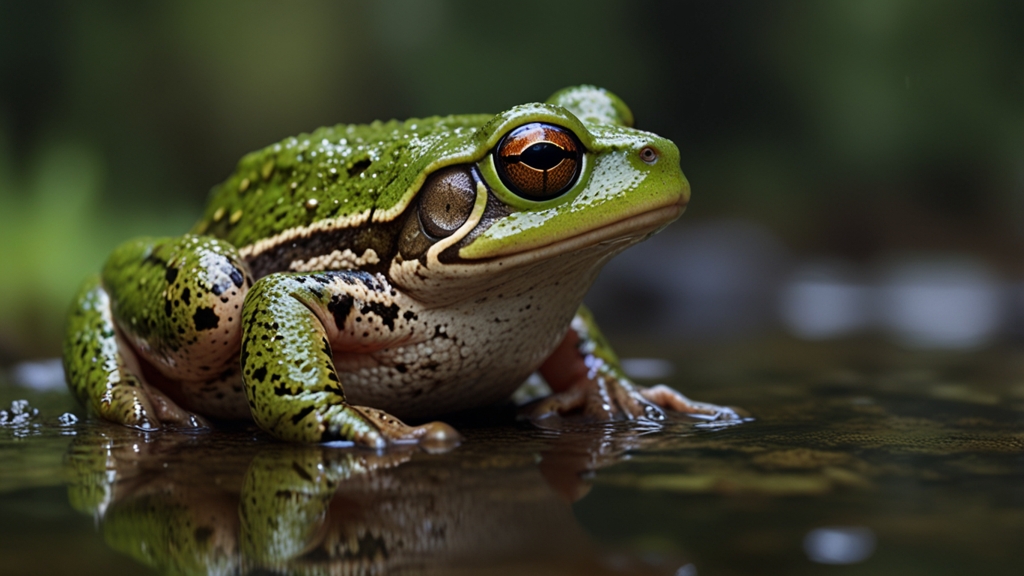The Extraordinary Journeys of Nature's Nomadic Giants
The Earth's vast landscapes have always been home to some of the most remarkable creatures, none as awe-inspiring as the nomadic giants of the animal kingdom. Spanning continents, seas, and skies, these incredible beings traverse immense distances, embodying the spirit of resilience and survival. From the African savannas to the frigid Arctic, their journeys are nothing short of extraordinary.
The Majestic Elephants of Africa
Among the most renowned nomadic giants are the African elephants. These majestic creatures are known for their intelligence, complex social structures, and, most notably, their migration patterns. Driven by the seasonal rains, elephants can travel up to 50 miles a day in their quest for water and food.
"African elephants travel vast distances, led by their matriarchs, guided by memory and instinct. Their journeys ensure the survival of their herds, threading through ancient paths shaped over generations." ― Dr. Jane Goodall
Their migration is not merely a movement from one place to another but a complex and coordinated endeavor. Elephant herds follow time-worn trails, playing a crucial role in shaping the ecosystems they traverse. Their journeys facilitate the dispersal of seeds, helping maintain the biodiversity of their habitats.
The Great Whale Migrations
The ocean's depths conceal the epic journeys of whales, nature's nomadic giants of the seas. Humpback whales, for instance, are known to undertake some of the longest migrations of any mammal, traveling from polar feeding grounds to tropical breeding waters and back.
"The journey of the whale is a testament to the wonders of the natural world. Through migrations spanning thousands of miles, they connect the world's oceans in ways we are only just beginning to understand." ― Sylvia Earle
These migrations are driven by the whales' need to feed in nutrient-rich waters during the summer and breed in warm waters during the winter. The journey is perilous, fraught with threats such as ship strikes and entanglement in fishing gear. Yet, year after year, these enigmatic giants undertake their ceaseless voyage, an enduring symbol of the interconnectedness of marine ecosystems.
The Soaring Monarch Butterflies
In contrast to the massive size of elephants and whales, the delicate monarch butterfly embarks on one of the most astounding migratory feats in the animal kingdom. Every year, these vibrant insects travel thousands of miles from North America to central Mexico, a journey spanning generations.
Monarchs born in late summer and early fall undertake the migration south, covering up to 3,000 miles. Remarkably, the butterflies that arrive in Mexico are not the ones that started the journey but their descendants, guided by an innate sense of direction and timing.
"The monarchs' migration is a miracle of nature, a fragile yet awe-inspiring testament to the power of instinct and resilience." ― Dr. Lincoln Brower
This annual migration is crucial for the survival of the species. The wintering sites in Mexico provide a unique microclimate that allows the butterflies to conserve energy and survive until spring. Unfortunately, habitat loss and climate change pose significant threats to this remarkable journey, making conservation efforts more critical than ever.
Conclusion
The extraordinary journeys of nature's nomadic giants serve as a powerful reminder of the resilience and adaptability of life on Earth. Elephants, whales, and monarch butterflies, despite their differences, share a common narrative of endurance and survival. Their migrations are not just physical movements but vital processes that sustain their species and the ecosystems they inhabit.
As we continue to learn from and about these remarkable creatures, it becomes increasingly important to protect the environments that facilitate their journeys. The nomadic giants of our world embody the interconnectedness of all life, urging us to recognize the profound impact our actions have on the delicate balance of nature.











